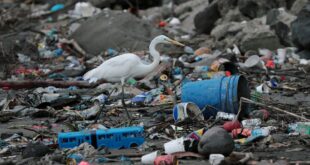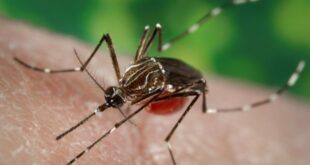Study results reflect the work of zookeepers, handlers and veterinarians, author says.

New research shows some marine mammals in captivity are living longer than before — and longer than their wild counterparts.
Hula is 17 years old. For harbour seals, that’s considered middle age.
She is a resident of the Edmonton Valley Zoo. Hula was found as a very young orphan pup off the coast of B.C., and nursed back to health in the Marine Mammal Rescue Centre. She was deemed non-releasable because she has seizures, the cause of which is unknown.
Due to the advances in animal husbandry, plentiful high-quality food — Hula’s favourite is herring — and readily available veterinary care, she can expect to live longer than her wild cousins.
A new study published in the Proceedings of the Royal Society B, found that the life expectancy of four marine marine mammal species commonly kept in zoological institutions around the world — harbour seals, California sea lions, bottlenose dolphins, and polar bears — is between 1.65 and 3.55 times longer in captivity than that of their wild counterparts.
The study also found that the lifespan of these four species in zoos and aquariums rose by 3.40 times between 1829 and 2020, as animal welfare practices improved.
“It’s a clear indication that the improvements in care in captivity have really increased the survival of these animals over long periods of time,” said Andrew Derocher, a professor at the University of Alberta who focuses on ecology, conservation, and management of large Arctic mammals, including polar bears, and one of the study’s authors.
Plentiful food, no predators
In captivity, Derocher said, the animals’ nutritional needs are well-met, and medical problems can be treated. Wild animals, on the other hand, are on their own. There also are no predators trying to eat the animals in a zoo.
The results of the study, Derocher said, reflect “the work that’s been done by zookeepers, and handlers, and veterinarians to increase the quality of care of these animals in captivity,” he added.
Hula usually gets three training sessions every day. These sessions are mostly designed to train her for medical behaviours. The goal is to desensitize the animals to get them to participate in behaviours they may find stressful using positive associations.
For example, Hula can put her nose into a device called anesthetic cone and breathe in and out on cue.
“This is really important, because for marine mammals, if we need to do any type of anesthetic, they’re able to voluntarily participate in that procedure, reducing stress,” said Laura Castor, the animal care leader at Edmonton Valley Zoo.
“The underlying golden rule of positive reinforcement training is it gives the animal choice and control to participate. So, if she wasn’t interested, she would take off, and we would come back later when she was,” Castor said.
During every training session, keepers examine the animal to ensure there are no scrapes, cuts, bumps or bruises. It also desensitizes the animal to human touch, which is useful for procedures like blood draws.
Caseload for veterinarians changed over 30 years
The findings of the study weren’t a surprise to Dr. Martin Haulena, the head veterinarian at the Vancouver Aquarium.
“It’s nothing new to those of us in the industry,” he said.
For Haulena, the take-away message of the research is that while the standards of animal care in zoos and aquariums continue to improve, the professionals who work in these institutions shouldn’t rest on their laurels.
“Nothing’s ever really good enough. You can always get better, and I see that in our students and our veterinary fellows and residents.”
Haulena said the types of procedures he performs on marine animals changed over his 30 years as a veterinarian: he deals more with geriatric medicine now and less on emergency care.
Animal welfare
The report notes that there is ethical debate regarding keeping marine mammals in zoos. Some countries have banned breeding certain marine mammal species, while others debate whether to follow suit.
Naomi Rose, a senior scientist for marine mammal biology at the Animal Welfare Institute, an organization that mostly opposes keeping marine animals in captivity, was surprised by the finding that polar bears live longer in captivity.
“I was firmly of the belief that polar bears didn’t live as long in captivity as they did in the wild, and they do,” she said.
However, Rose questioned whether longevity is a good metric for animal welfare.
“Just because they live a long time in captivity doesn’t mean their welfare is good.”
She said that an acceptable practice for zoos and aquariums would be to act as homes for rescued animals that can’t be rehabilitated and returned to the wild, such as Hula, but refrain from breeding animals in captivity lest their welfare be compromised.

The study was based on data that was self-reported by zoological institutions, which tended to follow the best practices. Derocher said that means that the data doesn’t give the full picture.
“We do have biased data. We’re getting the best information on the best housed and maintained animals.”
“We’re also not getting information on those species that are even more difficult to house,” he added.
There are many components of best practices for marine mammal care and management in zoological facilities, Castor said, and each of them contributes overall to animals’ lifespan.
“Whether we’re talking about good nutritional practices, good habitats, good veterinary care, things like that — I think that’s all part and parcel to what zoological institutions provide their animals that obviously animals in the wild would not be able to access.”
ABOUT THE AUTHOR

Journalist
Dennis Kovtun is a journalist with CBC Edmonton, covering a variety of stories in the city. Reach him at dennis.kovtun@cbc.ca.
*****
Credit belongs to : www.cbc.ca
 Atin Ito First Filipino Community Newspaper in Ontario
Atin Ito First Filipino Community Newspaper in Ontario






